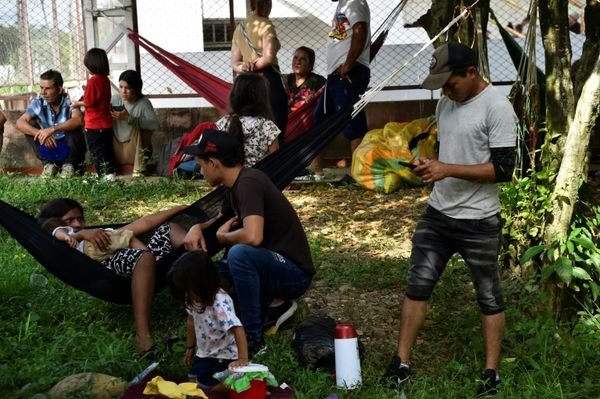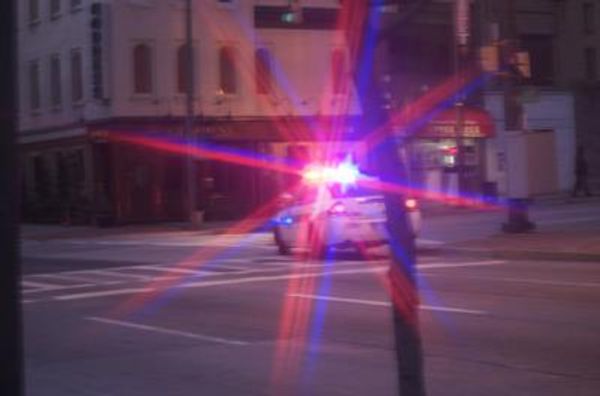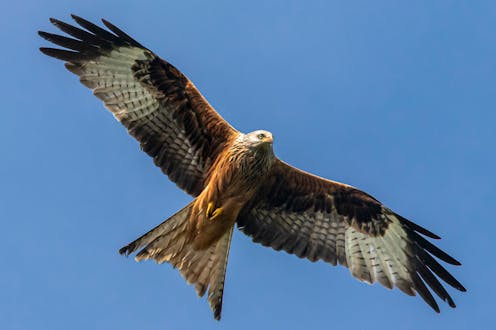
Take a drive down England’s M40 motorway and chances are you’ll see a large bird with a forked tail overhead searching for roadkill: the red kite.
The conservation status of this species has looked promising in recent years. Assessments made between 2005 and 2019 classified red kites as “near threatened” on the IUCN Red List, a global system for classifying each species’ extinction risk. Population growth throughout large swathes of the red kite’s range meant that the species was bumped up to “least concern” in 2020.
The UK’s growing population of red kites is largely a result of their reintroduction to parts of England and Scotland beginning in 1989. This is often hailed as a conservation success story. And rightly so. The number of red kites has soared (pun intended) by a whopping 1,935% between 1995 and 2020 across the UK.
While things are generally looking up for the species at a global level, populations in some countries, including Spain, France, Portugal and Slovakia are declining. Some of the causes of these declines have existed for centuries, such as hunting.
But a new study has revealed how climate change poses a hidden threat by permanently damaging the development of chicks born during droughts. This could undermine the recovery of the species and is a sobering reminder of the challenges that a warming world will confront species with, even those which seem to be doing well for the time being.
A hidden threat
Some of the effects of drought on wildlife are predictable. Drought conditions restrict water and food and hence, nutrition, forcing animals to work harder to meet their basic needs and remain healthy. Other effects can take years to become apparent.
In the new study, researchers used data from as far back as 1970 to assess how red kites hatched during a drought fared in later life. The authors tagged nestlings with a unique leg ring and monitored their survival over many years.
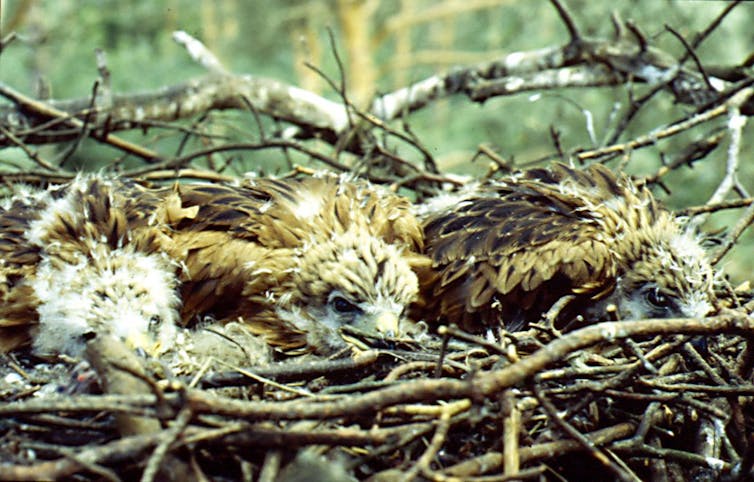
The authors concluded that some chicks born during a drought year, like 2022 in England and Wales, continued to face the consequences as adults. This might be because their development is permanently impaired due to a failure to meet their nutritional needs in early life; potentially making them smaller, more vulnerable to disease, and less capable of hunting.
Mounting threats put pressure on populations over time. As these populations begin to shrink due to the death rate exceeding the number of births, they can eventually enter a vortex: the population continues to decline until it goes extinct. This has happened once before with the British population.
Beginning in the 16th century, legal and illegal killings reduced red kite numbers. The bird’s increasing rarity made it a prime target for taxidermists and egg collectors, particularly in the Victorian era. By the late 1980s, red kites were extinct in England and Scotland. This highlights how older threats may conspire with new ones to reverse recent progress.
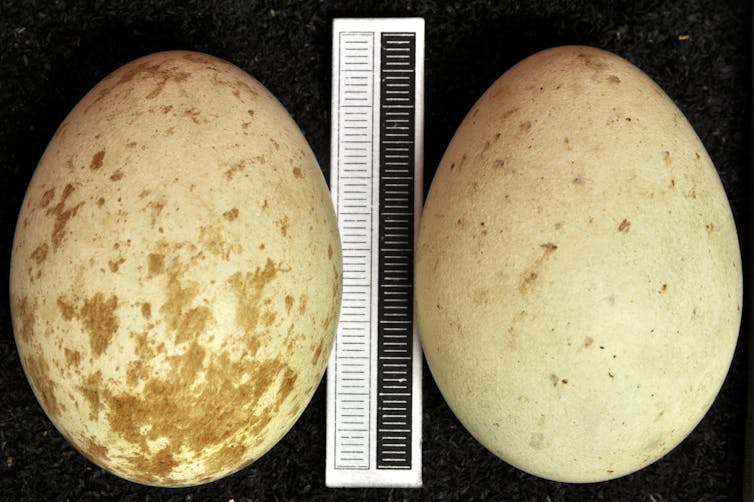
Helping species adapt
Red kites were considered vermin across Britain and Ireland during the 16th century and their numbers were rigorously controlled. While public perceptions have changed, gamekeepers and farmers still illegally shoot, poison and trap red kites for the perceived harm they cause to livestock and game. In 2020 alone, 20 red kites were confirmed to have been killed this way in the UK (and those are just the ones we know about).
As well as being efficient hunters, red kites feed on animal carcasses. This leaves them vulnerable to secondary poisoning: they may scavenge an animal killed using toxic substances, such as a mouse or rat, which pass to the predator.
Like other birds of prey, red kites have been known to fatally collide with wind turbines, which may affect populations on a local level. As large-bodied birds that glide while scouring the ground for prey, red kites may fail to spot the blades before it is too late.
As the climate changes, new threats are emerging that scientists are only beginning to understand, such as more frequent and severe droughts. The findings of this study highlight the importance of being proactive when approaching a species’ conservation.
But there is hope that some measures, such as providing shade over nests to protect young from severe heat and providing extra water when rain is scarce can help life partially adapt to the upheaval wrought by climate change.

Don’t have time to read about climate change as much as you’d like?
Get a weekly roundup in your inbox instead. Every Wednesday, The Conversation’s environment editor writes Imagine, a short email that goes a little deeper into just one climate issue. Join the 10,000+ readers who’ve subscribed so far.
Esther Kettel does not work for, consult, own shares in or receive funding from any company or organisation that would benefit from this article, and has disclosed no relevant affiliations beyond their academic appointment.
This article was originally published on The Conversation. Read the original article.

